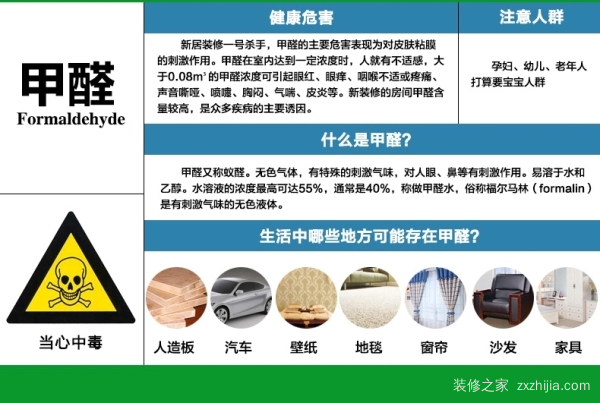As living standards improve, many families have bought big houses for new homes. New house decoration, formaldehyde and benzene in indoor air have become the "invisible killer" for human health. Because the decoration materials contain harmful substances such as formaldehyde, the newly renovated house contains harmful substances such as formaldehyde, benzene and TVOC, which are harmful to humans. Especially big. So how do you go after the renovation of formaldehyde in addition to it? Next, follow the decoration home network Xiaobian to learn about formaldehyde-related content! After the interior decoration, some consumers will mistakenly believe that the taste is the smell of formaldehyde. In fact, after the decoration, the pungent smell in the room is not only formaldehyde, but also the smell of chemical impurities in some materials. Can grapefruit peel remove formaldehyde? Some people on the Internet said that the newly renovated house and the newly bought car have a great taste and the formaldehyde is volatile. At this time, you can put a grapefruit skin in the house or car, which has a wonderful effect on removing odor and adsorbing formaldehyde. In fact, although the grapefruit skin tastes relatively large, it can cover the odor, but the harmful substances in the air do not have the effect of adsorption and removal, but the symptoms are not cured. Moreover, grapefruit peel can not only remove formaldehyde, but also increase the concentration of formaldehyde. Since grapefruit skin contains a lot of water, the evaporation of water into the air will increase the humidity of the environment. Scientific research shows that the increase of environmental humidity will increase the release of formaldehyde. This is why the content of formaldehyde in the sealed capsule of grapefruit skin is higher. When the indoor formaldehyde reaches a certain concentration, it will cause obvious discomfort to the body, such as red eyes, itchy eyes, sore throat or pain, hoarseness, sneezing, chest tightness, asthma, dermatitis and the like. Long-term, low-level exposure to formaldehyde can cause headache, dizziness, fatigue, sensory disturbance, decreased immunity, and can cause drowsiness, memory loss or neurasthenia, and depression; long-term exposure to formaldehyde can cause respiratory dysfunction and liver toxicity, performance It is a liver cell injury, abnormal liver radiation, and the like. Ventilation is a good choice to remove indoor pollution. Ventilation can not only remove free formaldehyde in indoor air, but also discharge harmful gases such as benzene and TVOC, introduce fresh air into the room, and increase the oxygen content of indoor air. However, it should be noted that the drawback of the ventilation method is that "the pole is effective and immediately fails." The formaldehyde volatilized in the air when it was opened was brought indoors, and once the window was closed, the formaldehyde concentration in the window would rise. And the day is getting colder and colder, and it is not suitable for taking ventilation. In addition to ventilation, how can we remove formaldehyde? 1, many families choose to ask formaldehyde control team to remove formaldehyde. Although a good team can manage pollution, the cost of artificial formaldehyde removal is too high for ordinary families. The formaldehyde management team is mixed, and it is difficult for laymen to distinguish which company is more reliable and which company has poor governance. Therefore, we must conduct a detailed investigation before choosing a governance team. 2. Activated carbon is a kind of black powder or blocky, granular, honeycomb amorphous carbon. Because of its strong adsorption, it is widely used in decoration and formaldehyde removal work. However, traditional activated carbon can only adsorb formaldehyde, but can not effectively decompose formaldehyde. Therefore, when it is saturated, we must replace it in time, otherwise there will be secondary pollution. At present, the common way to remove formaldehyde on the market is only activated carbon adsorption and professional formaldehyde treatment team. Although there are many small methods to solve the problem of formaldehyde on the Internet, for example, put plants, put a few large pots of tea, steamed vinegar, put orange peel, and more Some people recommend wearing a mask at home... and these methods are obviously unreliable. The above is a detailed answer on how to remove formaldehyde after renovation. I don't know if you are satisfied with the introduction of the decoration home network. If you want to know more exciting content related aspects, but please continue to focus our lives Encyclopedia Forum! More related wonderful reading: How to remove formaldehyde from the newly renovated house? When is it suitable for staying? How to remove the smell from the renovated house? Indoor deodorization cous How much does the formaldehyde exceed the standard? Method of removing formaldehyde What is the fastest addition to formaldehyde? What are the damages of formaldehyde to us? How long after the renovation of the new house can the baby stay? How to remove formaldehyde Ceramic pots are not only exquisite in appearance, but also more ornamental when matched with cultivated flowers; ceramic pots will be stronger and more durable than other material flowerpots. Ceramic Pots,Ceramic Flower Pots,Outdoor Ceramic Pots,Ceramic Flowerpot Wuxi Shute Ceramic Products Co., Ltd. , https://www.stflowerpot.com

The forming process of ceramic flowerpots is also mainly purely hand-molded. Hand-molding uses hand-drawn blanks and sculptural skills. It has a deep artistic expression. Each piece is unique. Compared with other materials, the appearance of ceramic pots is better. Beautiful and elegant, suitable for living room, bedroom, outdoor, courtyard furnishings, the damage rate is relatively lower than that of glass, plastic materials, etc. The basin body does not fade, does not deform, and has good water retention. It is the best choice for various potted plants . Gather the spirit of heaven and earth, give pottery a unique spirit and charm, and demonstrate profound cultural heritage.